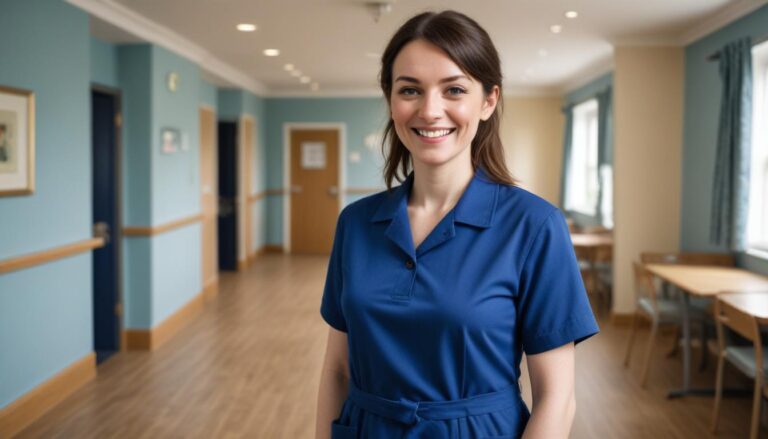Summary
- The Roper Logan and Tierney (RLT) Model is a nursing framework that focuses on 12 activities of daily living to assess and plan patient care.
- It offers a holistic approach, considering physical, psychological, sociocultural, environmental, and politico-economic factors.
- Reflective practice using the RLT Model helps healthcare providers evaluate their experiences and improve patient outcomes.
- While the model is beneficial, it can be complex and may need adaptation for cultural sensitivity and individual patient needs.
The Roper Logan and Tierney Model is a practical approach widely used in health and social care settings across the United Kingdom. Named after its creators — Nancy Roper, Winifred W. Logan, and Alison J. Tierney — this model provides a framework for assessing, planning, and delivering individualised care. It first appeared in 1980 and quickly gained recognition for offering a clear structure to help care professionals meet the specific needs of every person.
At its core, the model is based on the idea that every individual has needs connected to daily living. These needs can be influenced by a range of factors, including their physical health, mental state, environment, and social situation. The Roper Logan and Tierney Model closely links theory with practical care, making it an everyday tool for nurses, support workers, and other care professionals.
What is the Purpose of the Model?
The main purpose of the Roper Logan and Tierney Model is to support high-quality, personalised care. It guides professionals to see the whole person rather than just focusing on a specific illness or problem. The model helps create detailed care plans reflecting the needs, abilities, and preferences of each person.
Key aims of the model include:
- Identifying what each person can do and where they need support
- Helping staff make informed decisions in planning and delivering care
- Encouraging respectful, person-centred care
- Supporting recovery, independence, and dignity
By looking closely at the different activities of daily living, care professionals get a full picture of each person’s experiences and challenges.
The 12 Activities of Daily Living
The heart of the model lies in its twelve Activities of Daily Living (ADLs). These activities are universal: everyone needs to carry them out to some extent throughout their lives. They form the foundation for assessment and care planning.
Here are the twelve ADLs:
- Maintaining a safe environment
- Communicating
- Breathing
- Eating and drinking
- Eliminating (toileting)
- Personal cleansing and dressing
- Controlling body temperature
- Mobilising (moving around)
- Working and playing (work and recreation)
- Expressing sexuality
- Sleeping
- Dying
Let’s look at each activity in detail:
Maintaining a Safe Environment
This addresses a person’s ability to stay free from harm, both physically and psychologically. It covers everything from preventing falls to being aware of hazards, feeling secure in the environment, and knowing who to contact in an emergency.
Communicating
Communication refers to how people share ideas, feelings, needs, and information. It covers speech, writing, gestures, technology, and non-verbal communication. Any barriers — such as hearing loss or language differences — are considered here.
Breathing
Breathing is not just about lung function. The model encourages assessment of any issue affecting breathing, from chronic conditions to acute problems. This can involve checking for shortness of breath, monitoring oxygen levels, and considering the impact of anxiety.
Eating and Drinking
This looks at how people feed themselves, what they eat, their appetite, any special diets, and any challenges with swallowing or digestion.
Eliminating
Elimination covers urinating and opening the bowels. Personal dignity, independence, and adequate facilities play a big part here. Any problems or routines around toileting are carefully assessed.
Personal Cleansing and Dressing
This activity includes washing, bathing, oral care, grooming, and choosing or putting on clothes. It’s important for self-esteem and social participation.
Controlling Body Temperature
Some illnesses or environments can make it harder for people to manage their body temperature. Careful attention to clothing, bedding, and room temperature can make a difference, especially for older people, babies, or those unwell.
Mobilising
Mobility covers all movement — walking, transferring, turning, and balance. It picks up any aids needed, risks of falls, or support for rehabilitation.
Working and Playing
This area goes beyond employment. It includes volunteering, studying, hobbies, and leisure activities. These give meaning to life and promote well-being.
Expressing Sexuality
Sexuality is broader than sexual activity; it covers intimacy, relationships, self-image, and the right to privacy. Age or illness can affect this, and personal preferences should always be respected.
Sleeping
Sleep patterns, quality, and problems such as insomnia are explored. Poor sleep can impact physical and mental health.
Dying
This is about the experience of dying and end-of-life care. Respect, comfort, and communication with the person and their family are central.
The Five Key Factors
The model highlights five factors that influence how a person carries out each activity of daily living. These are:
- Biological: Genetics, physical health, disabilities, and medical conditions.
- Psychological: Emotions, cognition, and mental health.
- Sociocultural: Cultural background, beliefs, family structures, and social norms.
- Environmental: Physical surroundings, access to resources, living conditions.
- Politicoeconomic: Government policy, benefits, income, and access to services.
By considering these factors, care providers gain a better understanding of the whole person and the individual context in which they live.
Application in Health and Social Care
The Roper Logan and Tierney Model sits at the heart of nursing, but it’s equally useful in adult social care, community support, and other health environments. It supports safe, effective, and compassionate practice.
Assessment
During the initial assessment, care staff use the model as a checklist. Each activity gets discussed and documented, either with the person themselves or, if needed, their family members or carers. This shows what the person can do for themselves and where support is needed.
Care Planning
Assessment findings inform the care plan. Goals are set with the person, based on their abilities and wishes. Support might focus on maintaining independence in washing and dressing, or on providing specialist help with nutrition.
Delivery of Care
Tasks are based around the Activities of Daily Living. Staff work to maintain, improve, or support each area. Regular review means care can change as needs develop.
Review and Evaluation
Continual review helps track improvements, spot problems early, and update the care plan as things change. This makes care flexible and responsive.
Advantages of the Model
The Roper Logan and Tierney Model offers clear benefits:
- Person-centred: It treats each person as an individual with unique needs, not just a set of symptoms.
- Simple language: It breaks care into everyday activities, which makes communication easier.
- Inclusive: It covers physical, emotional, social, and spiritual needs.
- Practical: Its structure makes it easy to apply in real-life care settings.
- Support for teamworking: Different professionals and families can work together, using a shared framework.
Challenges in Use
No model is perfect. Some challenges in applying the Roper Logan and Tierney Model include:
- Time constraints: Carrying out detailed assessments can be demanding in busy settings.
- Documentation: There can be a risk of over-simplifying or making assessments too “tick box.”
- Cultural sensitivity: Some activities — particularly sexuality or end-of-life issues — require skill and sensitivity.
- Variability: Different professionals may interpret activities or influencing factors differently.
Example in Practice
Consider an older person who has just moved into a residential care home. The first step is to carry out a thorough assessment using the model.
Staff ask about:
- Mobility (does the person walk without help? Do they need equipment?)
- Eating and drinking (do they have a special diet? Do they need help at mealtimes?)
- Communication (can they express their needs?)
- Sleep (do they have a routine or struggle to get to sleep?)
- Personal care (can they wash and dress themselves?)
- Keeping safe (are there any risks of falling?)
They also look at factors such as the person’s cultural background, their health history, their living conditions before the move, and their own wishes or fears.
Staff work with the person to develop a plan that helps them maintain as much independence as possible, while offering support where needed. The plan is reviewed often, especially if health or circumstances change.
Impact on Person-Centred Care
The Roper Logan and Tierney Model’s focus on the whole person supports dignity, choice, and independence. It encourages care staff to listen, ask about preferences, and respect people’s life stories.
The model strengthens the bond between the person, their family, and care staff. This approach improves satisfaction, builds trust, and leads to better health and social outcomes.
Training and Professional Development
The model is a standard feature in nurse education and training across the UK. Students learn to use it during placements and in classrooms. In adult social care, teams often refer to the twelve activities when putting care plans together.
Continued professional development and reflective practice help staff deepen their understanding, making them more confident and effective.
Final Thoughts
The Roper Logan and Tierney Model stands out in health and social care for its simple structure and deep respect for individuality. By focusing on twelve core activities and considering five influencing factors, it builds a foundation for assessment, care planning, and ongoing support. It transforms everyday practice for thousands of professionals and makes a tangible difference to the lives of the people they care for.
Care built around this model is shaped by listening, learning, and working together. At its core, it values relationships, dignity, and independence, which are at the heart of high-quality health and social care.
Subscribe to Newsletter
Get the latest news and updates from Care Learning and be first to know about our free courses when they launch.





